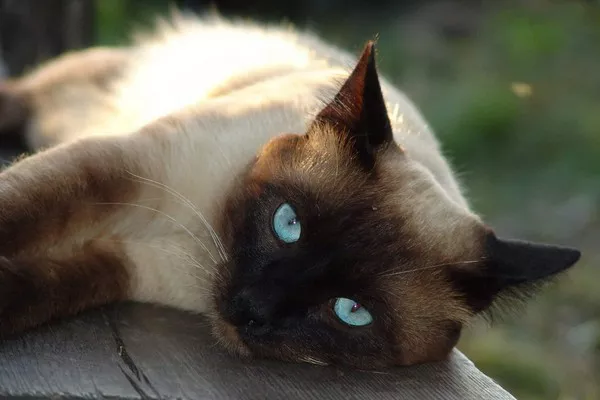Cats, with their discerning tastes and independent personalities, often leave us pondering what treats align with their dietary needs. While cats are obligate carnivores, meaning their primary diet should consist of meat, some fruits can be a safe and tasty addition to their meals. In this comprehensive guide, we explore the world of feline-friendly fruits, delving into the nutritional benefits and potential considerations for incorporating these treats into your cat’s diet.
Understanding Feline Nutrition
Before we embark on our exploration of cat-friendly fruits, it’s crucial to understand the nutritional needs of our feline companions. Cats are obligate carnivores, emphasizing the importance of animal-based proteins in their diet. Their digestive systems are designed to extract essential nutrients from meat, and they have limited ability to digest plant matter. While fruits may not constitute a substantial portion of a cat’s diet, some can offer valuable nutrients and serve as occasional treats.
Safe and Nutrient-Rich Fruits for Cats
1. Blueberries
Blueberries, packed with antioxidants, make a delightful and safe addition to a cat’s diet. These tiny, flavorful berries provide essential vitamins while offering a refreshing treat. Ensure they are served in moderation, as an excess of any treat can lead to digestive upset.
2. Strawberries
Rich in vitamin C and manganese, strawberries can be a feline-friendly treat. Remove the stems and offer small, bite-sized pieces. It’s crucial to monitor your cat for any adverse reactions and introduce new treats gradually.
3. Watermelon
On a hot day, a few chunks of seedless watermelon can provide hydration and a sweet, juicy indulgence. Remove seeds and rind, offering only the fleshy part in moderation. The high water content can contribute to your cat’s overall fluid intake.
4. Cantaloupe
Cantaloupe, with its orange goodness, introduces vitamins A and C to your cat’s diet. Remove seeds and the outer rind, presenting small, manageable pieces. As with any new treat, monitor your cat for any signs of intolerance.
5. Bananas
Bananas, in moderation, offer potassium and essential vitamins. Peel a small portion, ensuring it’s free of seeds, and offer bite-sized bits. Some cats may enjoy the texture and flavor, while others may show less interest.
See Also: Can Cats Eat Bananas? [Revealed!]
6. Apples (Without Seeds and Core)
Apples, when sliced into small, seedless portions, can be a crunchy and fiber-rich treat. Remove the seeds and core, as they contain compounds that can be harmful to cats. Supervise your cat to prevent choking hazards.
See Also: Can Cats Eat Apples & How to Offer Apples to Cats?
7. Pears (Without Seeds and Core)
Pears, when prepared in a similar manner to apples, can be a source of fiber and hydration. Ensure the absence of seeds and core, presenting pear slices in moderation. Introduce new treats slowly to observe your cat’s response.
8. Pumpkin
Cooked and plain pumpkin, not to be confused with pumpkin pie filling, can be a beneficial addition to a cat’s diet. Rich in fiber, it may aid in digestion. Start with small amounts and observe how your cat responds to this occasional treat.
9. Raspberries
Raspberries, in moderation, introduce dietary fiber and essential vitamins. Offer a few berries as a flavorful treat, ensuring they are fresh and free of molds. As with any new addition to their diet, monitor your cat for reactions.
10. Coconut (In Moderation)
Coconut, when served in small amounts, can be a tasty and nutritious option. Ensure it’s free of additives and sugars. Some cats may enjoy the tropical flavor, but it’s essential to monitor their response and introduce it gradually.
Introducing Fruits: Tips and Considerations
While incorporating fruits into your cat’s diet can offer variety and supplemental nutrients, it’s crucial to approach this with care. Here are some tips and considerations to ensure a safe and enjoyable experience for your feline friend:
1. Moderation is Key
Treats, including fruits, should constitute a small percentage of your cat’s overall diet. Moderation prevents overconsumption and helps maintain a balanced nutritional profile.
2. Monitor for Allergic Reactions
Introduce new fruits gradually and observe your cat for any signs of allergic reactions. Watch for symptoms such as vomiting, diarrhea, or changes in behavior. If any adverse reactions occur, consult your veterinarian.
3. Remove Seeds and Cores
Many fruits contain seeds and cores that can pose choking hazards or contain substances harmful to cats. Always remove these parts before offering fruits as treats.
4. Freshness Matters
Choose fresh, ripe fruits free of molds or spoilage. Freshness ensures the highest quality and minimizes the risk of digestive issues.
5. Consult with Your Veterinarian
Before introducing new treats, especially if your cat has underlying health conditions, consult with your veterinarian. They can provide personalized advice based on your cat’s specific needs.
6. Homemade Treats
Consider preparing homemade treats using cat-friendly fruits. This allows you to control the ingredients and offer a wholesome, additive-free option.
7. Hydration is Essential
While some fruits contribute to hydration, always ensure your cat has access to fresh water. Adequate hydration is crucial for overall health.
Conclusion:
In the realm of cat treats, fruits can add a delightful palette of flavors and nutrients. When chosen and offered with care, these treats contribute to a well-rounded and enjoyable dining experience for your feline companion. Remember that each cat is unique, and preferences may vary. As you explore the world of feline-friendly fruits, savor the joy of discovering which treats resonate most with your whiskered friend. Through mindful choices and attentive observation, you can cultivate a menu that not only pleases your cat’s taste buds but also enhances their overall well-being.



























